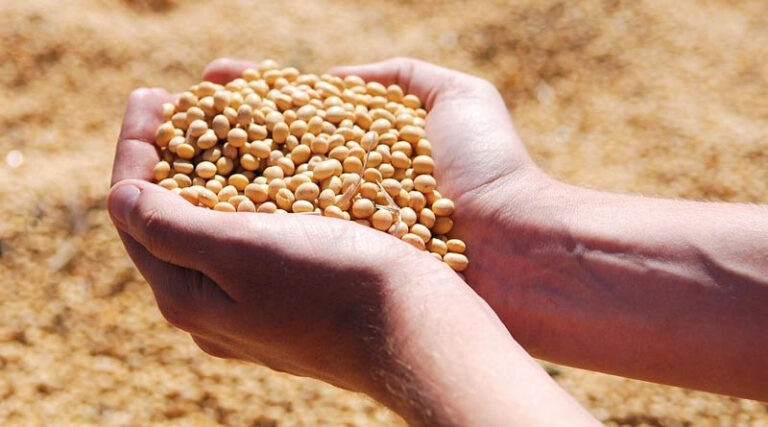
Latest Recommended High-Yielding Soybean Varieties in India (2025)
30 June 2025, New Delhi: Choosing the right soybean variety is the first and most crucial step to ensure a high and stable yield. Given that soil, climate, and crop cycles vary widely across India, a “one-size-fits-all” approach doesn’t work. To help farmers reduce crop risks and maximize productivity, here’s a comprehensive list of the latest notified and region-recommended high-yielding soybean varieties, categorized by agro-climatic zones.
Optimal Time for Sowing & Variety Selection
According to ICAR’s National Soybean Research Institute, Indore (Formerly Indian Institute of Soybean Research)., the ideal window for soybean sowing falls between the second half of June and the first week of July. However, sowing should only begin once the monsoon is fully active and the area has received at least 100 mm of rainfall. This ensures good seed germination and strong early crop establishment.
Farmers are advised to select soybean varieties that are specifically recommended or notified for their agro-climatic region. These varieties have been recommended by ICAR’s National Soybean Research Institute, Indore (Formerly Indian Institute of Soybean Research). Here’s the latest region-wise list:
Central Zone
(Madhya Pradesh, Bundelkhand region of Uttar Pradesh, Rajasthan, Gujarat, Vidarbha & Marathwada in Maharashtra)
Recommended Varieties:
JS 23-03, JS 23-09, MAUS 731, Gujarat Soya 4, JS 22-12, JS 22-16, NRC 165, NRC 157, MAUS 725 (Maharashtra), NRC 150, Phule Durva (KDS 992 – Maharashtra), JS 21-72, RVSM 2011-35, AMS 100-39 (PDKV Amba), NRC 142, MACS 1520, RSC 10-46, RSC 10-52, AMS-MB-5-18 (Swarn Soya)
Eastern and North-Eastern Hill Region
(Chhattisgarh, Jharkhand, Bihar, Odisha, West Bengal, Assam, Meghalaya, Manipur, Nagaland, Sikkim)
Recommended Varieties:
RSC 10-71, RSC 10-52, Birsa Soya-4 (Jharkhand), MACS 1407, MACS 1460, NRC 128, RSC 11-07, RSC 10-46
Northern Plains Region
(Punjab, Haryana, Delhi, Eastern Uttar Pradesh, Uttarakhand plains, Eastern Bihar)
Recommended Varieties:
Pusa Soybean 21, NRC 149, Pant Soybean 27, PS 1670, SL 1074, SL 1028, NRC 128, Bhat 202 (Kala Soybean from Uttarakhand), SL 979, SL 955, Pant Soybean 26 (PS 1572), PS 1368, PS 24 (PS 1477), VLS 89
Northern Hill Region
(Himachal Pradesh, hilly areas of Uttarakhand and Uttar Pradesh)
Recommended Varieties:
NRC 197, VLS 99, Him Palam Soya-1 (Himachal Pradesh), Pant Soybean 25 (PS 1556), Shalimar Soybean-1 (Jammu & Kashmir)
Southern Region
(Karnataka, Tamil Nadu, Telangana, Andhra Pradesh, Southern Maharashtra)
Recommended Varieties:
ALSB 50 (Telangana), MAUS 725 (Maharashtra), Phule Durva (KDS 992 – Maharashtra), NRCMACS 1667, NRC 142, MACS 1460, NRC 132, DSb 34, KDS 753 (Phule Kimaya), KBS 23 (Maharashtra)
Expert Advice for Better Crop Management
Farmers are encouraged to grow at least 2–3 soybean varieties with different maturity durations to reduce climate-related risks. In regions like Malwa (Madhya Pradesh), where a second crop is planted after kharif, early-maturing varieties are ideal. Meanwhile, in single-crop regions, farmers should opt for medium to long-duration varieties to maximize yield potential.
By aligning your seed choice with your region’s recommendations, you not only boost yield but also improve crop resilience and profitability.
Also Read: UPL continues its commitment to Biodiversity Conservation with the Tenth Annual Sarus Crane Count
📢 If You’re in Agriculture, Make Sure the Right People Hear Your Story.
From product launches to strategic announcements, Global Agriculture offers unmatched visibility across international agri-business markets. Connect with us at pr@global-agriculture.com to explore editorial and advertising opportunities that reach the right audience, worldwide.





